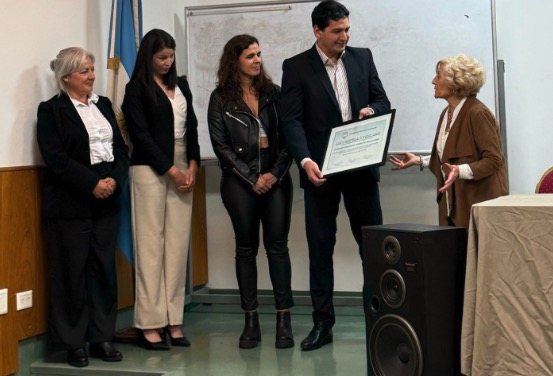En algunas ciencias se suele dar a especies de animales o ciertos ejemplares nombres de personajes famosos y los pingüinos de Magallanes no escapan a esta costumbre. Con apodos de "celebridades", varias de estas aves nadadoras comenzaron a migrar de Chubut a Brasil y se las puede seguir por internet durante su viaje oceánico en busca de alimento y temperaturas menos frías.
En coincidencia con el Día Mundial del Pingüino, Global Penguin Society (GPS) lanzó la tercera edición de la campaña de monitoreo “Celebridades en el océano” con un seguimiento a través de su sitio web oficial.
En la edición 2025 hay ejemplares que viajan con los apodos Roger Federer, Kun Agüero, Franco Colapinto, Bertie Gregory, Barbra Streisand, Leo Messi y Antonela, Leonardo DiCaprio, Taylor Swift, Mirtha Legrand y Susana Giménez.
De acuerdo al seguimiento online, algunas de estas aves nadadoras ya alcanzaron las aguas del sur de la provincia de Buenos Aires, mientras que otros continúan por la Patagonia argentina.
Cada pingüino lleva en su dorso un transmisor satelital que permite registrar diariamente su migración por el Atlántico Sur. Así se obtienen datos de interés como distancias recorridas, zonas de alimentación, tiempos de permanencia y amenazas en ruta, entre otros.
Con esta información, "GPS genera información científica, diseña estrategias de protección y promueve la creación de áreas marinas protegidas, especialmente frente a las costas de Argentina, Uruguay y Brasil, por donde estos animales viajan durante meses", indicó la organización en un comunicado de prensa.
Según los especialistas, los pingüinos de Magallanes enfrentan diversas amenazas durante su migración como captura incidental, contaminación por plásticos y derrames, cambios en la temperatura y condiciones del océano, prospecciones sísmicas y actividad offshore. Por ello es tan importante proteger a estos ejemplares y también los ecosistemas que habitan otras especies.
En ese marco, los científicos realizan estudios en ocho colonias de Chubut y Rio Negro, donde colocan los transmisores satelitales a los pingüinos adultos y registran su peso, sexo, medidas corporales y ubicación del nido.
De esta manera, pueden llagar a comprobar que algunos "mallagánicos" pueden nadar más de 170 kilómetros por día y recorrer hasta 16 mil al año.
A su vez, este año, la campaña sumó nuevos satélites del sistema francés ARGOS para mejorar la precisión de los datos obtenidos.
Por su parte, el fundador de GPS, Pablo “Popi” Borboroglu, fue elegido como Explorador del Año 2025 por National Geographic, un reconocimiento a su trabajo en una red de protección que ya alcanza a millones de aves marinas en el hemisferio sur.
"Una de las expectativas de la campaña es ver si hay variaciones en el patrón migratorio de esta especie y relacionarlas con las modificaciones oceanográficas vinculadas al cambio climático, y ya estamos viendo cambios", explicó a Clarín "Popi" Borboroglu, quien, en ese sentido, detalló que entre el 20 y 25 por ciento de los pingüinos ahora se queda en la zona sur sin migrar.
En tanto, y como parte de la visibilidad del trabajo de GPS, desde el 21 de abril está disponible en la plataforma Disney+ la serie documental “Secretos de los Pingüinos”, narrada por Blake Lively, producida por James Cameron y protagonizada por el explorador y cineasta de vida silvestre Bertie Gregory.
Esta serie muestra imágenes inéditas de las tareas de campo de “Popi” Borboroglu en la Patagonia, la relación entre las ciencia y las comunidades locales, y el viaje de los pingüinos por el océano.
Desde la organización añadieron que los famosos están "muy interesados" en sus "tocayos", por lo que esperan que los difundan en sus redes sociales a modo personal.
Fuente: Gonzalo Herman - Clarin.com





